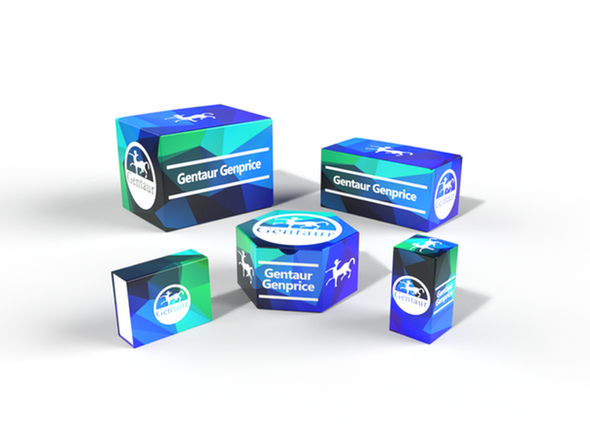Description
IL-8 Antibody (biotin) | XP-5199Bt | Gentaur UK, US & Europe Distribution
Host: Rabbit
Reactivity: Human
Homology: N/A
Immunogen: Produced from sera of rabbits pre-immunized with highly pure (>98%) recombinant hIL-8 (human Interleukin-8) .
Research Area: Immunology, Chemokines & Cytokines, Antibody Pairs
Tested Application: E, WB
Application: ELISA:
Sandwich:
To detect hIL-8 by sandwich ELISA (using 100 μL/well antibody solution) a concentration of 0.25 - 1.0 μg/mL of this antibody is required. This biotinylated polyclonal antibody, in conjunction with our Polyclonal Anti-Human IL-8 (XP-5199) as a capture antibody, allows the detection of at least 0.2 - 0.4 ng/well of recombinant hIL-8.
Western Blot:
To detect hIL-8 by Western Blot analysis this antibody can be used at a concentration of 0.1 - 0.2 μg/mL. Used in conjunction with compatible secondary reagents the detection limit for recombinant hIL-8 is 1.5 - 3.0 ng/lane, under either reducing or non-reducing conditions.
Specificiy: N/A
Positive Control 1: N/A
Positive Control 2: N/A
Positive Control 3: N/A
Positive Control 4: N/A
Positive Control 5: N/A
Positive Control 6: N/A
Molecular Weight: N/A
Validation: N/A
Isoform: N/A
Purification: Anti-hIL-8 specific antibody was purified by affinity chromatography and then biotinylated.
Clonality: Polyclonal
Clone: N/A
Isotype: N/A
Conjugate: Biotin
Physical State: Lyophilized
Buffer: N/A
Concentration: N/A
Storage Condition: IL-8 antibody is stable for at least 2 years from date of receipt at -20˚C. The reconstituted antibody is stable for at least two weeks at 2-8˚C. Frozen aliquots are stable for at least 6 months when stored at -20˚C. Avoid repeated freeze-thaw cycles.
Alternate Name: NAF, GCP1, LECT, LUCT, NAP1, CXCL8, GCP-1, LYNAP, MDNCF, MONAP, NAP-1, Interleukin-8, C-X-C motif chemokine 8, IL-8
User Note: Centrifuge vial prior to opening.
BACKGROUND: IL-8 is a member of the CXC chemokine family. This family of small basic heparan-binding proteins are proinflammatory and primarily mediate the activation and migration of neutrophils into tissue from peripheral blood. This chemokine is one of the major mediators of the inflammatory response and is secreted by several cell types in response to an inflammatory stimulus. It functions as a chemoattractant, and is also a potent angiogenic factor. IL-8 attracts neutrophils, basophils, and T-cells, but not monocytes.






